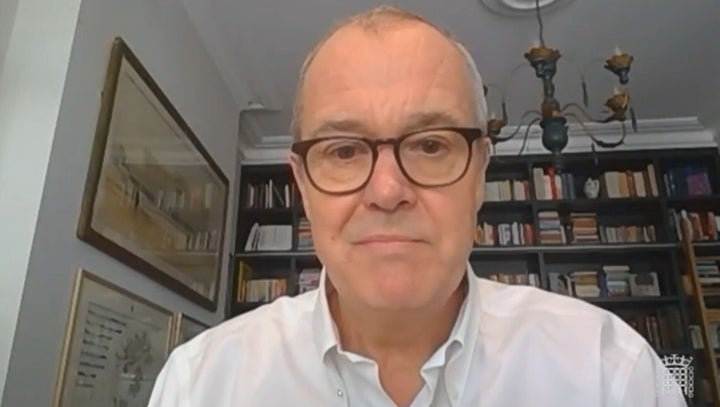Coronavirus has changed everything. Make sense of it all with the Waugh Zone, our evening politics briefing. Sign up now.
The risk of catching coronavirus is between 10 and 30 times higher one metre from an infected person than it is at two metres away, the government’s chief scientific adviser has said.
Sir Patrick Vallance also revealed that a minute at two metres contact carries around the same risk as six seconds at one metre as he underlined the importance of current social distancing rules.
The different transmission rates mean wearing face masks could be beneficial to stop the spread of Covid-19 once the lockdown is eased and there are places where it is not possible to keep two metres away from others, Vallance said.
He said this could include areas where there may be “undue crowding”, suggesting masks could be useful on busy public transport networks like the London Underground.
Valance was speaking at the Commons health committee on Tuesday, as the government prepared to unveil plans to allow people to go back to work.
Boris Johnson is expected to outline how the lockdown will be eased in an address to the nation on Sunday.
Defence secretary Ben Walllce on Monday suggested that the two metre distancing rule could be relaxed and mitigated by cutting the time people spend close to each other, or by providing workers with personal protective equipment (PPE).
Provisional guidance for businesses has sparked Labour and union concerns that workers will not be protected when returning to their jobs after the lockdown is eased.
Vallance made clear today the risk of transmission is higher at close proximity. “The two metre distancing is based on a probability,” he said.
“The evidence is, as far as you can get very firm evidence on this, that essentially that a minute at two metres contact is about the same risk as six seconds at one metre.
“So that gives you some idea of why two metres becomes important.
“The risk at one metre is about 10 to 30 times higher than the risk at two metres.”

Vallance said masks may be useful to stop infected people spreading the virus in droplets from their nose or mouth where social distancing is not possible.
He said: “Where therefore masks may have a role is in situations where distancing is not possible.
“So there may be some cases where that simply isn’t possible - where there may be undue crowding, but ideally there shouldn’t be crowding, there may be times when wearing masks can therefore be beneficial to stop the spread.
“It’s important that those coverings are worn properly, so in other words they cover the nose and mouth, and it’s important that people don’t handle their face a lot because there’s a much, much higher risk in terms of transmission from hand to face, from touching things.
“So that the rather boring but rather important thing of washing hands remains absolutely critical in all of this.”
